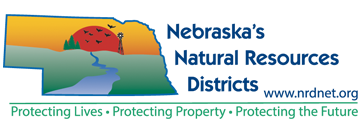Lower Loup NRD Shares Facts About Water
Lower Loup NRD Shares Facts About Water
Article submitted for Loup Lines by Lower Loup NRD Information & Education Coordinator Alan Bartels.
We all know that water is important and that we need it to live. But how much do we really know about water? Here are a few fun Nebraska water facts, courtesy of the Nebraska Water Center.
• Nebraska has the most substantial groundwater resources of any U.S. state thanks to the Ogallala Aquifer, which is part of the Great Plains Aquifer. There is enough water under our feet in Nebraska to cover the entire surface of the state with 38 feet of water. More than 189,000 Nebraska groundwater wells tap into those subterranean resources.
• Groundwater (aquifers) and surface water (streams, lakes, wetlands) are connected. Makes sense, but in Nebraska and elsewhere, groundwater and surface water are, or have been, managed differently. We now know that practices that influence groundwater also impact surface water, and vice versa.
• Lake McConaughy has a storage capacity of 1.74 million acre-feet. This means there is enough water in the lake to cover 1.74 million acres of land with one foot of water.
• When full, Lake McConaughy covers 30,500 acres.
• Lake McConaughy supplies irrigation water to 210,000 acres through Central Nebraska Public Power and Irrigation District.
• There are 2,969 dams in Nebraska more than 25 feet tall.
• In Nebraska, 594 public water supply systems serve 1.69 million residents. The remaining 360,000 Nebraska residents get their water from private wells that are exempt from testing for contaminants such as nitrates.
• On average, each Nebraskan uses 122 gallons of water every day.
• Home water use has dropped by 1/3 in the last 20 years.
• Seven out of Nebraska’s top 10 tourist attractions involve water.
• A corn plant is 80% water.
• A person’s body is 66% water.
• Nebraska’s typical precipitation ranges from 33 inches in southeast Nebraska to only 13 inches in the west.
• Agricultural irrigation accounts for 91% of Nebraska’s total water use. Another 5% is used in homes. Industry, thermoelectric projects, and livestock use 1% each.
• The Bureau of Reclamation states that 97% of the world’s water is salt water. Three percent is freshwater, but only .5% of the world’s water is fresh water recoverable for human use. While Nebraska’s groundwater resources seem immense, in the grand scheme of things, our water truly is rare and precious.
Nebraska’s Natural Resources Districts are charged with helping to protect water from overuse and pollution in the state, but all water users share that responsibility.
Wherever there is a well, faucet, spigot, showerhead, toilet, drain, or natural water source, each of us can have a direct impact in helping to conserve and protect our precious water resources.
